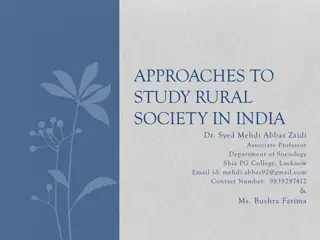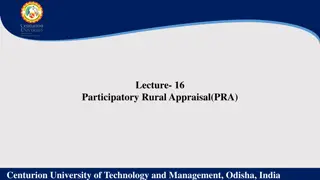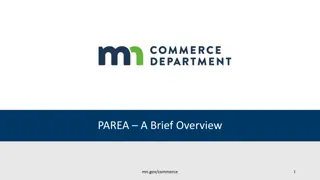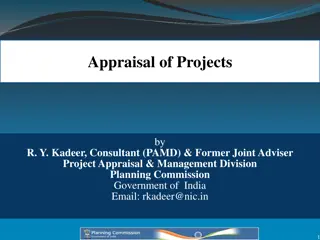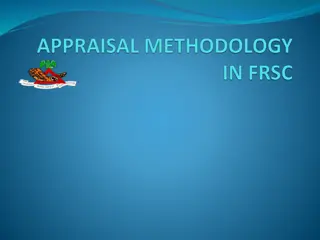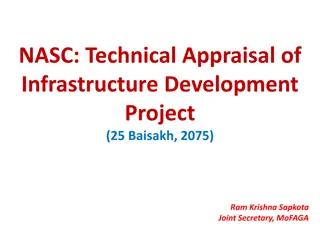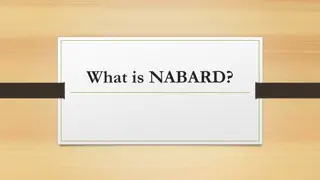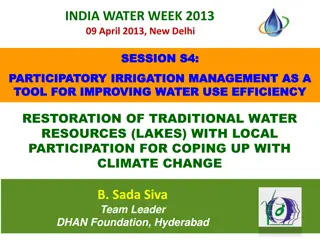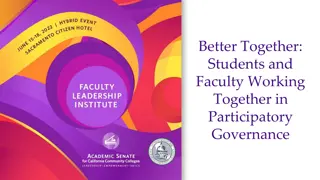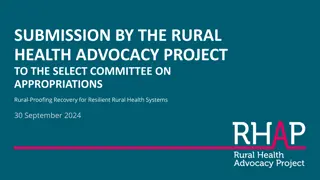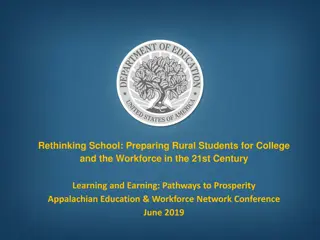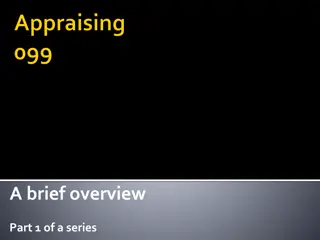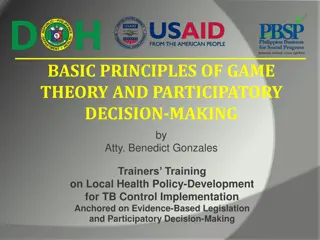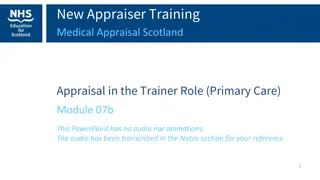Understanding Participatory Approaches in Rural Appraisal
Participatory Rural Appraisal (PRA) is a methodology focusing on enabling local communities to share, enhance, and analyze their knowledge to plan and take action. Originating as Rural Rapid Appraisal (RRA) in the 1970s, PRA emphasizes participation, shared visual representations, and empowerment of local people. With a foundation in behavior, methods, and partnership, PRA aims to be participatory, relevant, flexible, rapid, and low-cost.
Download Presentation

Please find below an Image/Link to download the presentation.
The content on the website is provided AS IS for your information and personal use only. It may not be sold, licensed, or shared on other websites without obtaining consent from the author. Download presentation by click this link. If you encounter any issues during the download, it is possible that the publisher has removed the file from their server.
E N D
Presentation Transcript
Participatory approaches and methods to enable local people to share, enhance, and analyse their knowledge of life and conditions, to plan, and to act. Rural Appraisal is a family of -Robert Chambers
History of PRA In 1970s RURAL RAPID APPRAISAL(RRA) began to emerge as approach and method. RRA stressed on the use of secondary sources, observation &verbal interaction, semi structured interview, FGDs. Led to debate on- rapid, non-participatory, used by universities/aid agencies,
Cont.. So in 80s and 90s, RAPID got replaced gradually with PARTICIPATORY got known as PRA which emphasized shared visual representations and analysis by local people, with an objective of empowering the local people specially the poor, by discovering the people s capabilities for sustainable local action in addition to the methods used by RRA. Today, they are also further known as PLA or PLM ( Participatory Learning Method) by the practitioners.
What is PRA? For some, PRA is primarily identified with its distinctive visualization methods- maps, diagrams, charts and so on with and by groups of people in poor communities using local materials on ground and symbols rather than writing. PRA has to culminate in making action plan in which people define what they would like to change and how they would go about it. PRA is more than a technique. It is about underlying values and about the attitudes and behaviour of professionals towards those they work with within and beyond an organisation they work for.
Cont For some it is an entry point for changing the ways in which development work is done because it directly addresses relationships of power which subordinate local people and local knowledge. For many, PRA seeks to empower the poor, weak, vulnerable- and to make power reversals real.
Three foundations/pillars Behaviour and attitudes of outsiders-who facilitate, not dominate- hand over the stick, facilitate, don t rush Methods- shift from closed to open, from individual to group, from verbal to visual Partnership and sharing of information, experience, food and learning between insiders and outsiders
So PRA is- Participatory Relevant Flexible Rapid and low cost empowering
Assumptions of PRA Rural communities form active foundation for rural development Communities need committed local leaders to stir up their development Communities have knowledge and information but it needs to be organized Communities have resources but they need to be mobilized. They can introduce projects, acting primarily on their own resources.
Community organizations are among the many, which are under utilized resources available for development efforts. Thus, PLA/PRA brings together on the one hand, development needs defined by the community members and on the other, skills of Government, donor agencies and NGOs. It integrates traditional knowledge systems and external technical knowledge in the development process.
PRA helps communities to Mobilize their human and natural resources Define problems Consider previous successes and failures Evaluate priorities and opportunities Prepare a systematic and site specific plan of action
PRA principles and features Respecting people s knowledge and learning from them. Listening to the disadvantaged: Respect Optimal ignorance: Do not collect data, which you do not need. Flexibility: PRA does not stick to fixed plan to action Triangulation: Sources of information change, men, women, different questions It involves a team of people working with a community for several days. Analysis is done in the field Continuity
Tools and Techniques Transect Walk Maps and Diagrams- Social map Resource map Seasonal map Mobility map Chappati or Venn Diagram Time line Daily routine map Charts Observation Semi/unstructured interview Discussions Meetings Ranking/Matrix others
Role of facilitator Rapport building Respectful abandon preconceptions Hand over the stick Watch, listen, learn learn from mistakes be self critical and self aware be flexible be honest
DOs Enjoy the programme and every one else Spend adequate time planning your PRA Involve your core team and other members in designing and developing the programme Visit the village before hand, Meet key villagers, explain the purpose of the exercise, request their help and support
Cont. Be clear about the purpose of the exercise Keep time for the following: - morning briefing/sessions. - Recreation breaks. - Night review of day's work and plans for following day (written proceedings, reflection/ write ups/sharing/ Documentation and pictorial) the
Cont Relax and enjoy the exercise. If things go wrong then as Robert Chambers says `embrace error'. Create an energy around you so that everyone - the outside participants, the villagers, the women, the children are enjoying themselves and your presence. Be alert for new things. Either ideas and concepts, or methods, or information. Be creative and inventive, and encourage others to do so
Cont Do enlist the support of insiders; school teachers, village elders, youth etc. Recognise and respect the villagers and their knowledge. Make them feel that what they know is important; old people are the most experienced and knowledgeable. Try sincerely to be a learner for a few days.
Donts Don't rush into things Don't be over-elaborate or extravagant. Don't make the PRA a `Mela'. Don't promise people things you cannot give them. Don't raise expectations. Don't overload/overdo Don't end up in the trap of endless, irrelevant debates. Be open but not open ended.
Cont.. Don't delay the documentation bit. If it is not done within three days of the exercise - don't bother to do it - you'll never get it done. Don't be afraid of making mistakes - provided you learn from them
Cont Don t stick with only one section of the population either and exclude others - unless for a specific purpose. Don t exclude the women and children Don t allow a We-They situation to evolve. Consciously, keep mixing with the villagers, especially during the evening group presentations, look around and see where your colleagues are positioned, are they scattered with villagers or are they in a group by themselves. Don t hesitate to ask villagers for advice DON T LECTURE! and DON T INTERRUPT


